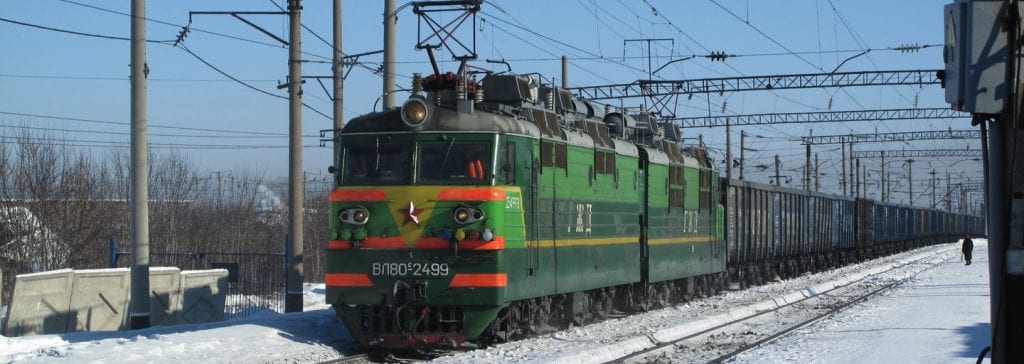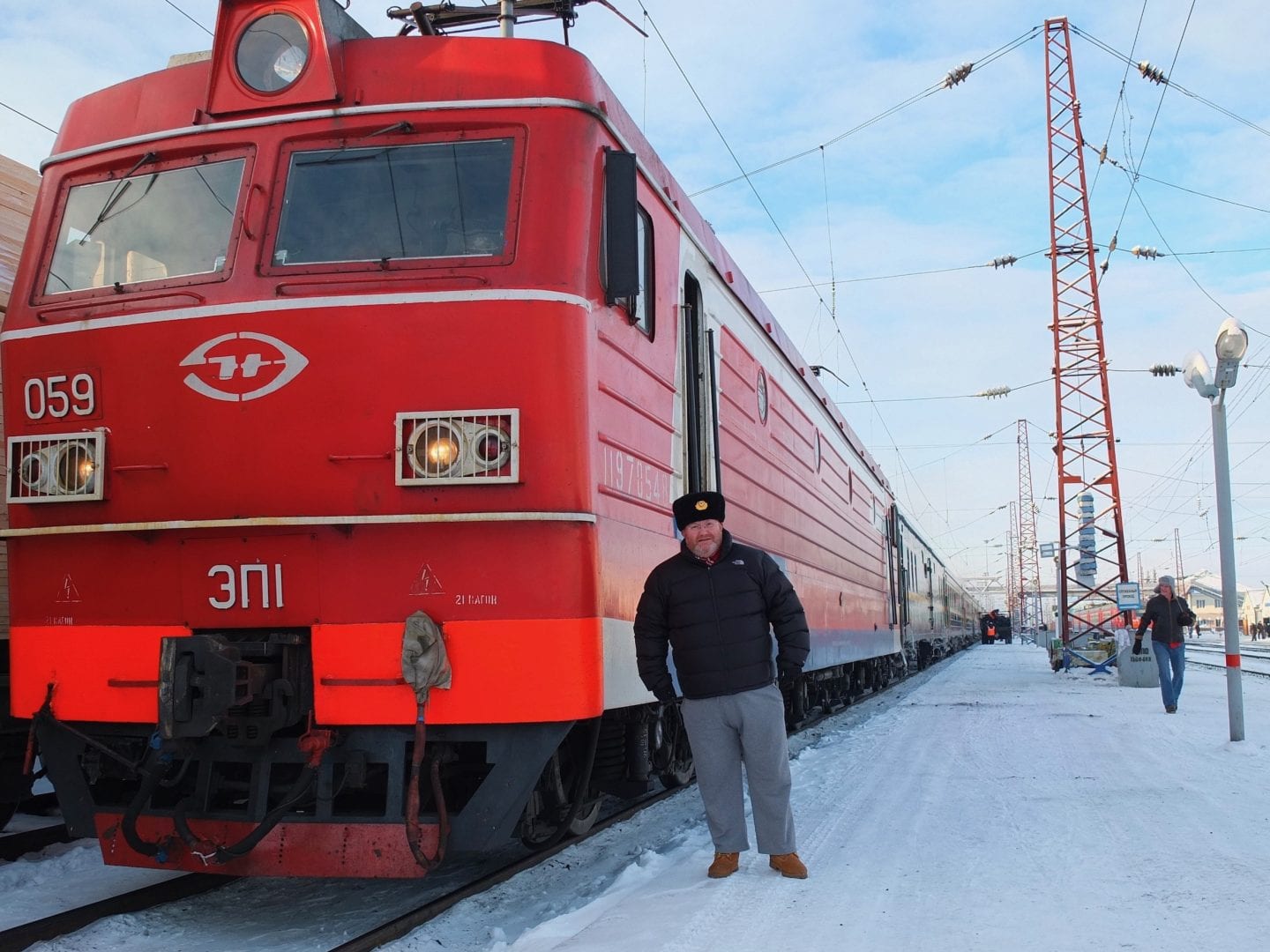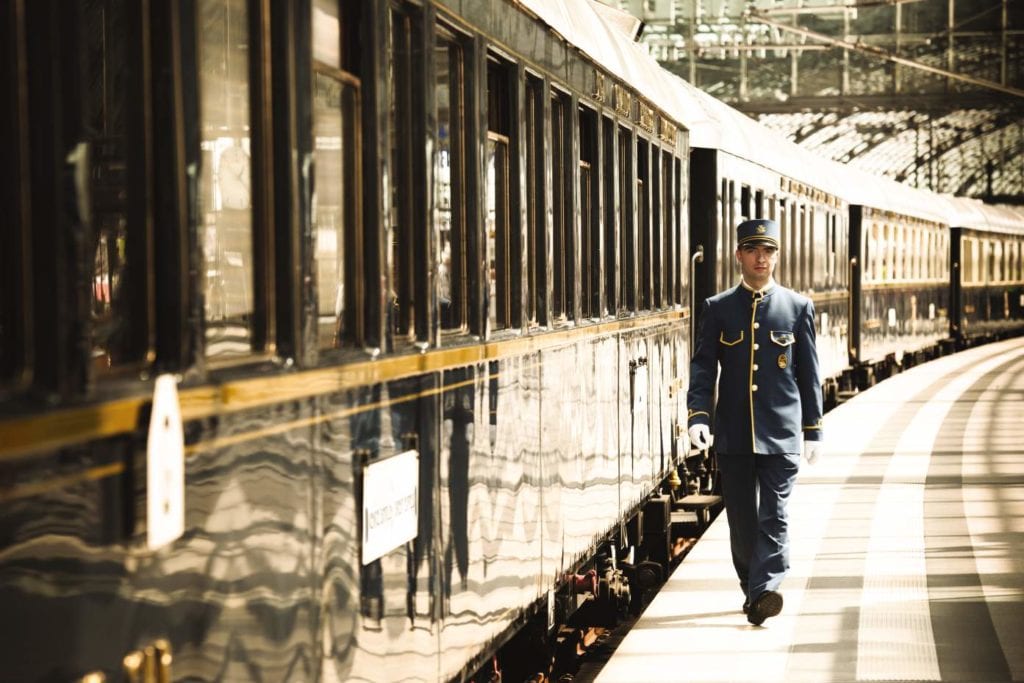
Choosing a Long Range Route for Your Next Rail Adventure by Matthew Woodward
Author Matthew Woodward has taken many long-range rail trips on railways around the world. He has written books on several of these journeys, the latest ‘The Railway to Heaven’ on a trip from his home in the UK to Tibet via Manchuria.
I have always been fascinated by history of rail routes and often try to follow them in their original form as best as I can, but successful long-range rail adventure can sometimes feel like an exercise in planetary alignment. Cosmic events take place that you have absolutely no control over. Changes in economic and political circumstances allow exciting new routes to be explored, but at the same time others close, and often without much warning. Some amazing journeys that were once very normal have now become virtually impossible. Take, for example, the route of the original Orient Express and Taurus Express. In 1940 it was possible to travel from London to Istanbul and onward to Baghdad by just two trains – more than 2500 miles (4000 km) through quite a lot of countries in less than eight days. But at the time of writing, even though we now have a tunnel under the English Channel and the Bosporus, it is hard work connecting several infrequent trains to reach Istanbul, let alone onward to Iraq: underinvestment in infrastructure, red tape, engineering projects and even civil war prevent the success of such an endeavour.
Sometimes things change more gradually, or more than one version of a classic route emerges over time. The route of the Orient Express, for example, is not just one line, but a spider’s web of connections between a variety of European cites. The great train has left Paris bound for Bucharest, Belgrade, Sofia, Athens, and of course Istanbul. I have followed several versions of the Orient Express. Which one you take depends on the cities you wish to visit, but in terms of rail friendliness, my favourite is currently the northern route – Paris – Munich – Budapest – Bucharest and Istanbul. The journey via Zagreb and Sofia is very interesting but the connections are currently few and far between.
If you reach Istanbul, how about extending your trip by train? If you keep going east you can catch the newly reinstated train to Tehran if you have the right visa, or take the new train service from Ankara to Baku when it commences in the months ahead. An amazing visa free journey on the Transcaucasus railway. I explored Georgia, Armenia and Azerbaijan on a recent trip and found them to be beautiful, safe and easy to navigate by rail. Turkish trains are very comfortable, part high speed, and part slow speed with some of the best scheduled sleeper carriages that I have ever encountered.
Further east, the Trans-Siberian isn’t a single express train, but in fact several trains using three main routes crossing the continent from Moscow; the Trans-Siberian to Vladivostok, the Trans-Mongolian to Beijing and the Trans-Manchurian also to China, but the long way around. The ‘Trans-Sib’ has to be my favourite train route in the world. There is something exciting about a train that crosses so many time zones in seven days across such an amazing environment. Today you might take it for granted. But it wasn’t always that easy. The 9289-kilometre line from Moscow to Vladivostok was finished in 1890. More than 60,000 men had laboured on it under the supervision of Tsar Nicholas II, creating one continuous set of tracks across the vast expanse of Siberia. Then millions of migrants headed east on the line, opening the region up to agriculture and industry. Today it is still far cheaper to deliver a container from China to western Europe by train than it is by ship. It is now actually possible to travel on a single train from Kiev to Vladivostok, a journey of over 11,000 kilometres – the longest continuous rail service in the world.
Other than its vast size and beauty, Siberia is perhaps best known for its brutal climate. But as a surprise to the unprepared, the summer can be quite hot, and the temperature variation between the seasonal highs and lows can range by over 100°C.The southern plains familiar to Trans-Siberian rail travellers have a relatively mild continental climate, with a longer, warmer summer than other parts of the region. Yet in winter at Irkutsk, near Lake Baikal, the average daytime January temperature is -20°C – but this can drop to -50°C. If you like your weather extreme, to the north and east is of Irkutsk lies the ‘pole of cold’, and at its heart a place called Oymyakon, best known for its record-breaking temperatures. Not for the climatic faint hearted, it ranges from +35°C in July to -67°C in January.
Fortunately, Russian Railways (RZD) have plenty of experience of operating in this climate. Their ability to run scheduled services across the continent in almost any weather is impressive to people like me who come from a country where leaves on the line or the wrong sort of snow are enough to cause widespread delays and cancellations. On board these trains, carriages are heated to close to 30°C inside, powered by both electricity and a coal-fired boiler. In winter it is quite normal to have a temperature difference of more than 60°C between your sleeping compartment and the other side of the thin metallic skin that separates you from the outside world.
If you decide to travel from Moscow to Vladivostok on a regular train, its number will be 001 or 002, depending in which direction you travel. There is a clue to the level of service you will find here. The lower the number the better, and this is the Rossiya, the premier scheduled train using the latest carriages and with great service. Vladivostok feels slightly different to many other Russian cities, perhaps because was closed to foreigners during the cold war or because migrants from Korea and China have settled there. From the port it’s possible to catch a ferry to South Korea or Japan. But the Trans-Mongolian route is perhaps the most popular line for travellers. The Gobi Desert is spectacular, and the Mongolian dining carriage is not to be missed. Arriving in Beijing it is then possible to travel onward almost anywhere in Asia by train. Shanghai is just a few hours away, and with the new high-speed network, you can even reach Hong Kong in less than 9 hours. If you feel adventurous then other options might include Tibet, Singapore or even North Korea.
Long range rail adventure can be pretty addictive, and whichever route you choose, you might find yourself coming back to Tailor Made Rail for more!
Tailor Made Rail offers luxury journeys along the Trans-Siberian route aboard the Golden Eagle private train. For journeys on the public train from Moscow to Vladivostok or Beijing, please call us on 020 3322 7741 or send us an email to info@tailormaderail.com and we can help plan a holiday for you with trains, accommodation and flights.

The Railway to Heaven by Matthew Woodward is published by Lanna Hall in paperback at £8.95 and Kindle at £3.99. You can find out more about this and other books by Matthew Woodward by visiting his website: www.matthew-woodward.com/books. You can also follow him on twitter @OnTheRails |














